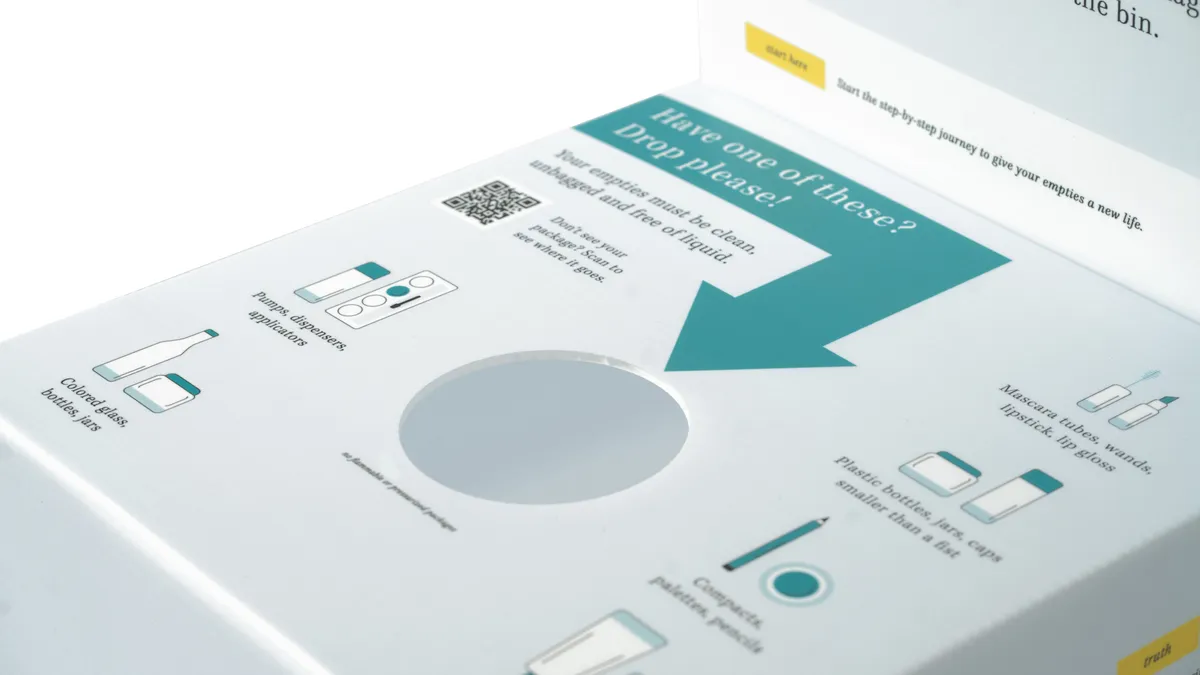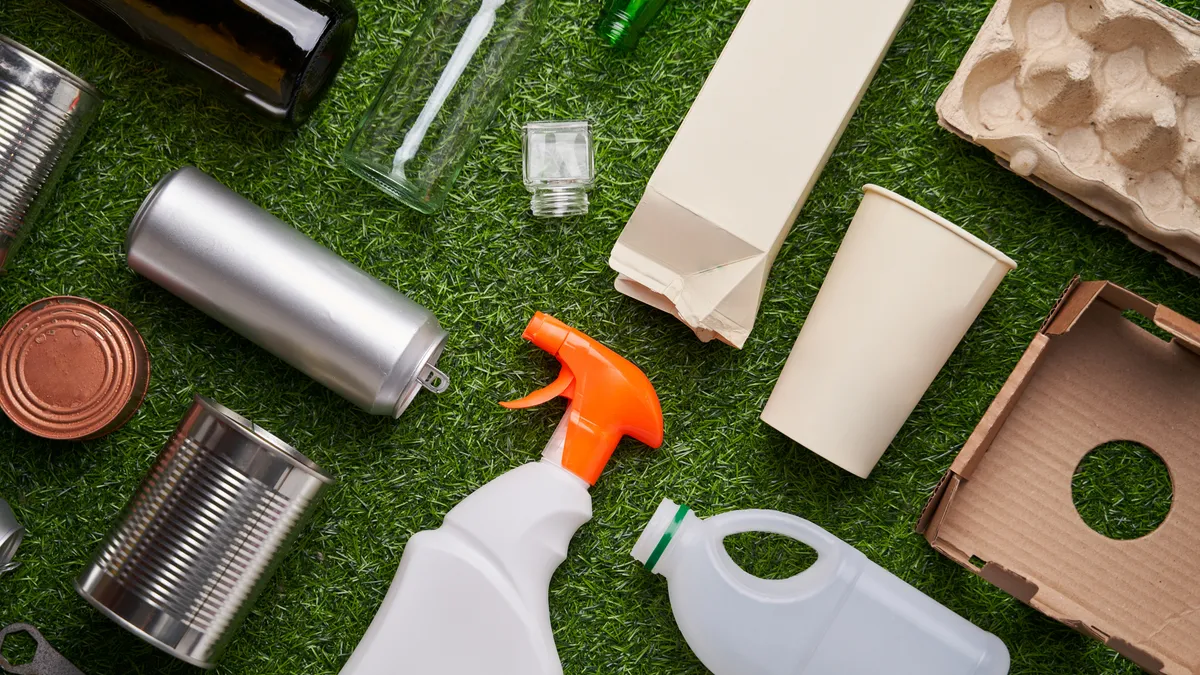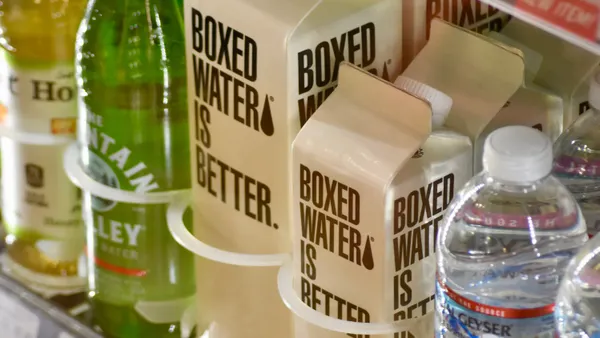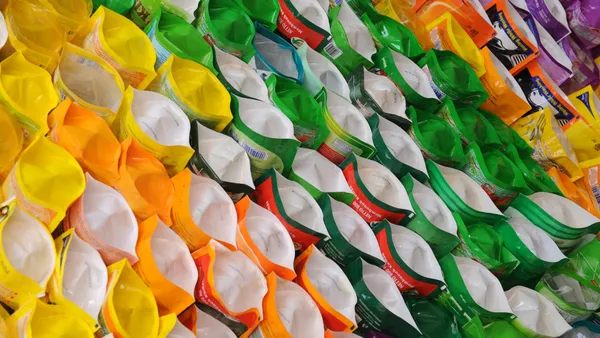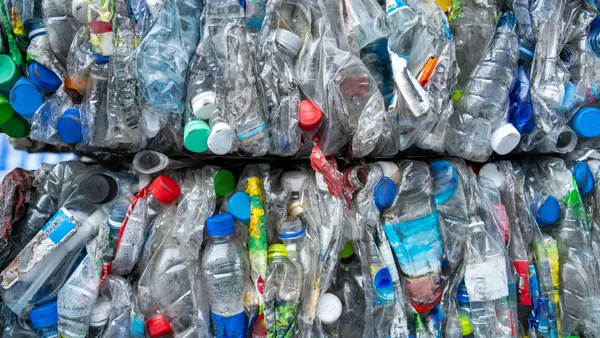Dive Brief:
- Pact Collective — a group of more than 150 brands, retailers and packaging suppliers in the beauty industry focused on circular solutions — released its 2023 Impact Report on Monday, showing that while the volume of material diverted from landfills decreased 53% year over year to 73,038 pounds, consumer engagement in collection programs increased.
- The nonprofit attributed much of the 2023 decline to an 85% year-over-year drop in the amount of obsolete inventory and unsellable goods collected. Pact said this bulk material has huge potential for upcycling, making it a focus area for 2024.
- Other Pact focal areas for 2024 include encouraging beauty packaging suppliers, when they use plastic, to use higher-value No. 1 PET, No. 2 HDPE and sometimes No. 5 PP. The group also wants to increase education about the importance of recycling packaging that is both clean and empty. Pact’s footprint spans in-store, in-office, mail-in and obsolete inventory collection programs, and it reports being on track to almost triple its bin footprint in 2024.
Dive Insight:
Formed by MAC veteran and Mob Beauty founder Victor Casale and “clean beauty” retailer Credo in 2021, Pact offers solutions to help the industry tackle beauty packaging waste, one skin care product at a time. Pact has partnered with retailers like Sephora and Credo to enable consumers to dispose of their empty packaging either by mail or through in-store recycling bins — a concept similar to recycling giant Terracycle’s Beautycycle program in partnership with Nordstrom.
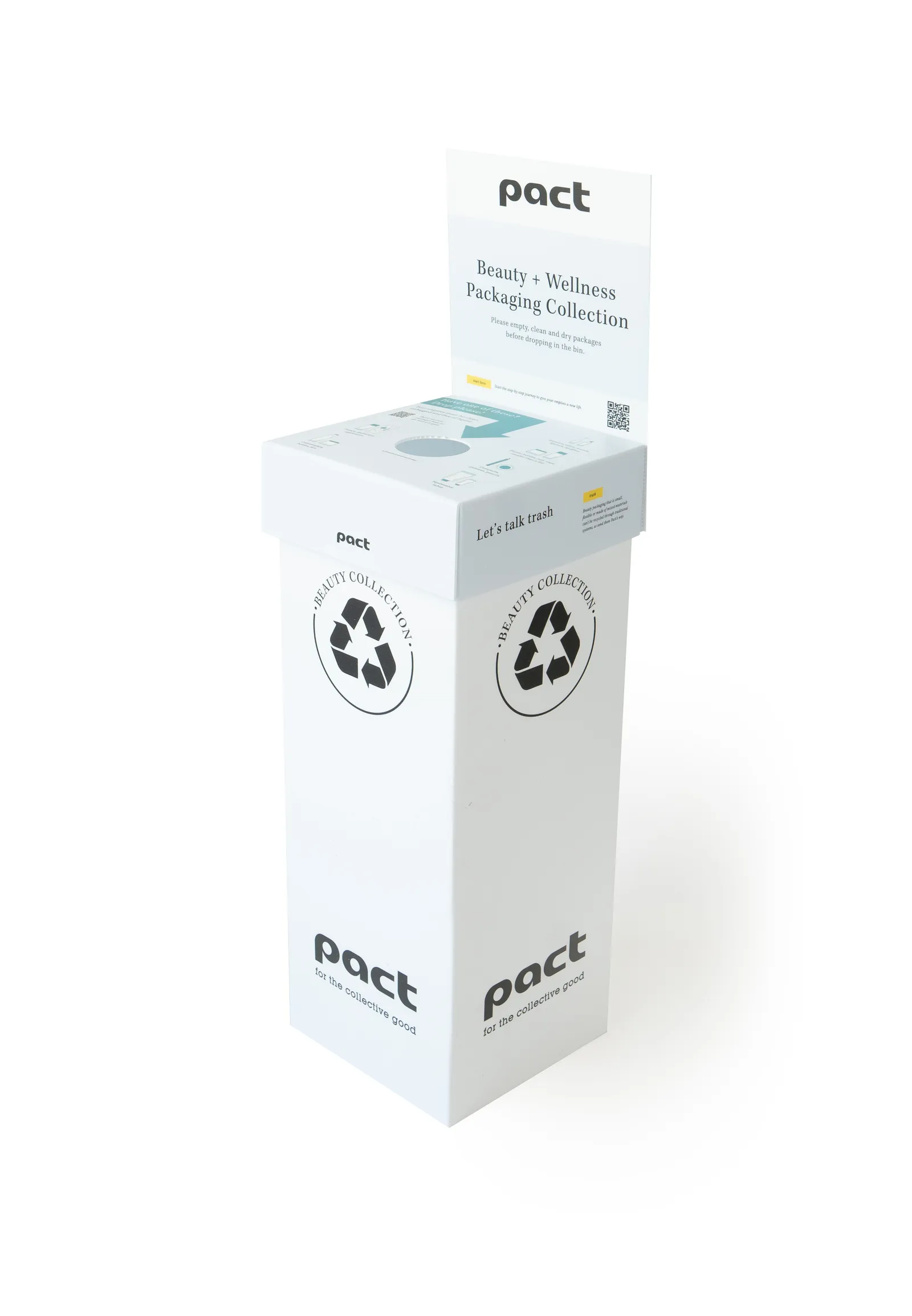
In addition to working with major retailers, Pact also encourages small brands and industry activists to work together to help combat waste systemically, counting Benefit Cosmetics, Fenty Beauty and packaging company Concept Workshop Worldwide among its more than 150 members.
“The goal here is that we can unveil the curtains of recycling and disposal and end-of-life situations and solutions to really get our members who are beauty stakeholders involved in the conversation,” said Carly Snider, Pact’s executive director.
Snider pointed to success in increasing the number of collection bins in physical stores. Last April, Sephora introduced Beauty Re(Purposed), incorporating Pact recycling bins into each of its more than 500 stores across the U.S. and Canada, increasing Pact’s bin footprint by 73%. Pact now has recycling bins in more than 2,500 stores.
“Not only are we watching these programs, and there's growth as far as the programs available, but we're seeing quality engagement, which is really what we're focused on,” Snider said.
With the in-store recycling model, customers drop empty, cleaned packaging (plastic, mixed materials and colored glass are accepted) into a Pact bin at their nearest participating retailer. Glass was the most commonly collected material in 2023, representing 36.9% of Pact’s total. The material is then either mechanically recycled, downcycled, molecularly recycled or converted to energy.
While more consumers and brands are making strides toward recycling, there’s still room for improvement in the beauty industry. The report found that many brands are still using single-use No. 7 plastics — often found in lids and dispensers for beauty packaging — that have a lower likelihood of being recycled, in part due to having lower value or mixed materials. To combat this, Pact is calling for producers to add resin codes to the packaging, which will make it easier for consumers and recycling programs to determine where the material should go.
Another issue the report detailed is that people often recycle beauty packaging without cleaning it out, thus putting it into the contaminated category that cannot be recycled — which is also a common problem with food packaging.
“I think a lot of people think, ‘Oh, our material goes to a material recovery facility, and it's recycled, and it’s done,’” Snider explained. “And that's really not the case at all.”
She added that education is paramount to make consumers aware of the complexities and nuances of the recycling process.
Pact’s goals for 2024 include adding more members and ensuring more consumers properly dispose of their favorite beauty and skincare products at the end of the life cycle.
“We’re getting the industry to speak the same language, to have a unified message,” Snider said, noting that brands can join the collective and utilize Pact’s recycling programs on a sliding-scale basis, making solutions accessible to a wide range of businesses.


